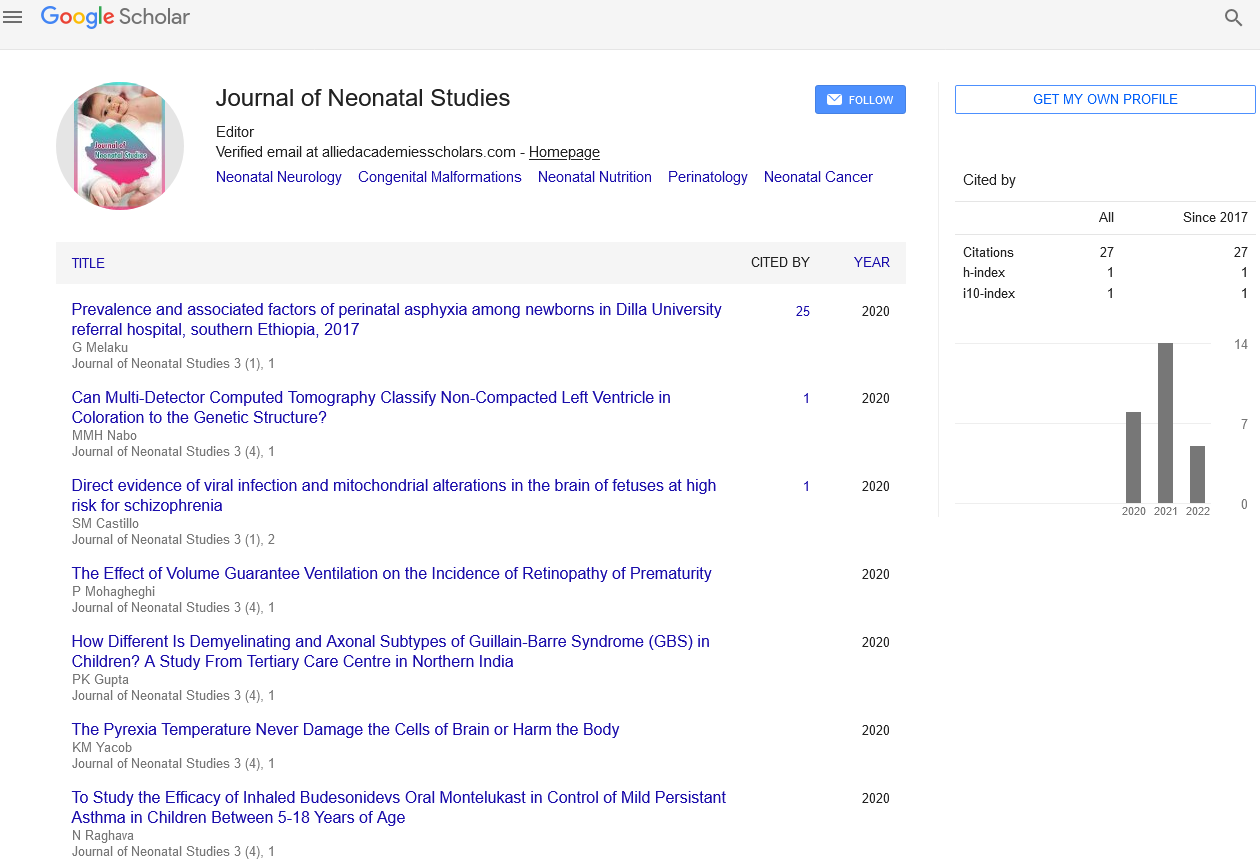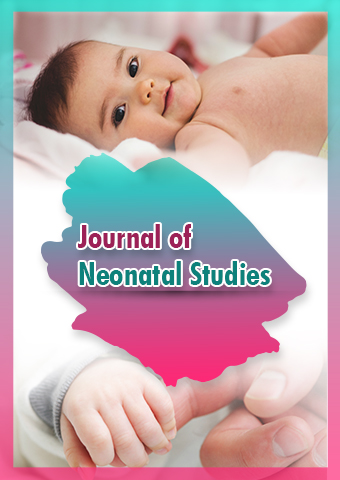Mini Review - Journal of Neonatal Studies (2023) Volume 6, Issue 4
Vaccination and Immunization: The Cornerstone of Public Health
Aditya Khushwaha*
Department of Stem Cell and Research, Benin
Department of Stem Cell and Research, Benin
E-mail: khushwaha@231gmail.com
Received: 01-Aug-2023, Manuscript No. jns-23-109493; Editor assigned: 2-Aug-2023, PreQC No. jns-23- 109493(PQ); Reviewed: 15-Aug-2023, QC No. jns-23-109493; Revised: 22-Aug-2023, Manuscript No. jns-23- 109493(R); Published: 29-Aug-2023; DOI: 10.37532/jns.2023.6(4).115-117
Abstract
Vaccination and immunization have played a pivotal role in shaping the landscape of public health throughout history. The concept of vaccination emerged centuries ago, and since then, significant advancements in medical science have led to the development of vaccines against a wide array of infectious diseases. Vaccines work by stimulating the immune system to recognize and remember specific pathogens, providing immunity without causing the actual disease. This article explores the principles, benefits, and challenges of vaccination and immunization. Vaccines have not only eradicated deadly diseases but also prevented severe complications and established herd immunity. However, vaccine hesitancy and disparities in access remain challenges. As we look to the future, ongoing research and innovative technologies hold great promise in ensuring the continued success of vaccination programs, contributing to a healthier and safer global community. Emphasizing education, equitable distribution, and evidence-based approaches will be essential in harnessing the full potential of vaccination and immunization to safeguard public health.
Vaccination • Immunization • Public health • Infectious diseases • History of vaccination • Principles of vaccination • Immune system • Herd immunity • Vaccine benefits • Vaccine safetys
Introduction
Vaccination and immunization have revolutionized the field of medicine and public health, saving countless lives and eradicating several deadly diseases throughout history. The concept of vaccination dates back centuries, with significant advancements in the past century contributing to a remarkable reduction in the burden of infectious diseases. This article explores the history, principles, benefits, and challenges of vaccination and immunization, highlighting their crucial role in safeguarding global health. Vaccination and immunization stand as monumental achievements in the field of medicine, solidifying their position as the cornerstone of public health. These two interconnected practices have played a vital role in preventing and controlling the spread of infectious diseases, saving countless lives and improving global well-being. Throughout history, vaccination has led to the eradication of deadly diseases and significantly reduced the burden of illness and disability [1].
The roots of vaccination can be traced back to the pioneering work of Edward Jenner in the late 18th century, who discovered that inoculating individuals with cowpox material could protect them from smallpox. This revolutionary breakthrough set the stage for modern immunization and sparked a wave of research and development of vaccines against a plethora of infectious agents. The principles of vaccination are founded on the ability to harness the body’s remarkable immune system. By introducing weakened, inactivated, or partial forms of disease-causing agents into the body, vaccines prompt the immune system to mount a defense and produce antibodies. These antibodies, once generated, remain in the body, ready to thwart future encounters with the same pathogen. As a result, vaccination provides protection against specific diseases, often without the individual ever experiencing the full-blown illness [2].
Over the years, vaccines have played an instrumental role in not only preventing diseases but also reducing the severity of infections and their associated complications. Diseases like polio, measles, mumps, rubella, and hepatitis have witnessed substantial declines in incidence and morbidity due to widespread vaccination efforts. Additionally, vaccination has facilitated the concept of herd immunity, where a sufficiently vaccinated population provides indirect protection to vulnerable individuals who cannot be immunized, such as infants or those with compromised immune systems [3].
In this article, we delve into the history, principles, benefits, and challenges of vaccination and immunization. We explore how these practices have shaped public health, examine the current state of vaccination programs, and discuss the future prospects of these vital interventions. Emphasizing evidence-based practices, promoting vaccine education, and fostering global cooperation will be pivotal in upholding the legacy of vaccination and immunization as the guardians of public health in the 21st century [4].
Discussion
History of vaccination
The practice of vaccination began in the late 18th century when Edward Jenner successfully used cowpox material to protect individuals from smallpox, a devastating disease that claimed millions of lives worldwide. This groundbreaking discovery laid the foundation for modern immunization. Over the years, researchers and scientists have developed vaccines against various infectious diseases, including polio, measles, mumps, rubella, influenza, hepatitis, and many others [5].
Principles of vaccination
Vaccination works by stimulating the body’s immune system to recognize and remember a particular pathogen (virus or bacterium). Vaccines typically contain weakened or inactivated forms of the disease-causing agent or components of it. When introduced into the body, these agents trigger a mild immune response, leading to the production of antibodies. These antibodies remain in the body, ready to combat the pathogen if it is encountered again in the future. By “training” the immune system in this way, vaccines offer protection against specific diseases without causing the actual illness [6].
Immune system and immunization
Understanding the immune system’s role is crucial in comprehending how vaccines work. The immune system is a complex network of cells, tissues, and organs that work together to defend the body against harmful invaders. It comprises innate and adaptive immunity. Innate immunity provides a general defense against various pathogens, while adaptive immunity is specific and develops after exposure to a particular pathogen or vaccination [7].
Benefits of vaccination
Vaccination has transformed public health in numerous ways
Disease eradication
Vaccines have led to the eradication of smallpox and have brought polio close to eradication. Other diseases, such as measles and rubella, have been dramatically reduced.
Prevention of complications
Vaccines significantly reduce the severity of diseases and the likelihood of developing severe complications. For instance, the flu vaccine can prevent hospitalizations and deaths related to influenza.
Herd immunity
When a significant portion of a population is vaccinated, it confers indirect protection to those who cannot be vaccinated due to age, underlying health conditions, or other reasons. This concept, known as herd immunity, helps protect vulnerable individuals [8].
Cost-effectiveness
Vaccination is a cost-effective public health intervention, preventing illness, reducing medical costs, and boosting workforce productivity.
Challenges and misconceptions
Despite the undeniable benefits, vaccination faces challenges
Vaccine hesitancy
Some individuals may be hesitant to get vaccinated due to concerns about safety, side effects, or misinformation. Addressing these concerns through education and open dialogue is vital.
Access and equity
Ensuring equitable access to vaccines worldwide remains a challenge. Disparities in vaccine availability and distribution can lead to outbreaks and hinder global disease control efforts [9].
Emerging diseases
The emergence of new infectious diseases may require the rapid development of vaccines to curb their spread effectively.
Vaccine safety
Ensuring the safety of vaccines is of utmost importance. Rigorous testing, monitoring, and surveillance systems are in place to identify and address any adverse effects.
Future of vaccination
The future of vaccination is promising, with ongoing research and advancements in vaccine technology. Novel approaches, such as mRNA vaccines, have shown incredible potential, as demonstrated during the COVID-19 pandemic. Researchers are also exploring the development of vaccines against challenging diseases like HIV and malaria [10].
Conclusion
Vaccination and immunization have undoubtedly been among the most significant achievements in public health history. They have saved millions of lives, prevented countless cases of disease, and continue to protect communities worldwide. As we navigate the challenges of the 21st century, it is essential to reinforce public education, ensure equitable access to vaccines, and promote evidence-based decision-making to maintain and build on the success of vaccination programs. By working together, we can harness the power of vaccines to create a healthier and safer world for all. Vaccination and immunization, without a doubt, stand as the unyielding cornerstone of public health, shaping the course of human history and transforming the way we combat infectious diseases. From the initial discovery of vaccination by Edward Jenner to the ongoing research and development of novel vaccines, these practices have brought about immense progress, saving countless lives and preventing widespread outbreaks. Embracing vaccination as a shared responsibility supported by robust healthcare infrastructure and informed decisionmaking, will empower us to fortify the defenses against emerging diseases and preserves the legacy of vaccination as a symbol of hope and progress for generations to come.
Acknowledgement
None
Conflict of Interest
None
References
- Mamdouh N, Khattab A. YOLO-based deep learning framework for olive fruit fly detection and counting. IEEE Access. 9, 84252-8426 (2021).
- Brunelli D, Polonelli T, Benini L. Ultra-low energy pest detection for smart agriculture. IEEE Sens J. 1-4 (2020).
- Goyal M.Endovascular thrombectomy after large vessel ischaemic stroke: a meta- analysis of individual patient data from five randomised trials. Lancet. 22, 416-430 (2016).
- Berkhemer OA.A randomized trial of intra-arterial treatment for acute ischemic stroke. N Engl J Med. 14, 473-478 (2015).
- Rodrigues FB.Endovascualar treatment versus medical care alone for ischemic stroke: a systemic review and meta-analysis. BMJ. 57, 749-757 (2016)
- Bekker-Grob EW, Ryan M, Gerard K. Discrete choice experiments in health economics: a review of the literature.J Health Econ.21,145-172 (2012).
- Uduak CU, Edem I. Analysis of Rainfall Trends in Akwa Ibom State, Nigeria. J Environ Sci. 2, 60-70 (2012).
- Davari Dolatabadi A, Khadem SEZ, Asl BM et al. Automated diagnosis of coronary artery disease (CAD) patients using optimized SVM. Comput Methods Programs Bio. 138, 117–126 (2017).
- Patidar S, Pachori RB, Rajendra Acharya U et al. Automated diagnosis of coronary artery disease using tunable-Q wavelet transform applied on heart rate signals. Knowl Based Sys t. 82, 1–10 (2015).
- Giri D, Acharya UR, Martis RJ et al. Automated diagnosis of coronary artery disease affected patients using LDA, PCA, ICA and discrete wavelet transform. Knowl Based Syst. 37, 274–282 (2013).
Indexed at, Google Scholar, Crossref
Indexed at, Google Scholar, Crossref
Indexed at, Google Scholar, Crossref
Indexed at, Google Scholar, Crossref
Indexed at, Google Scholar, Crossref
Indexed at, Google Scholar, Crossref

